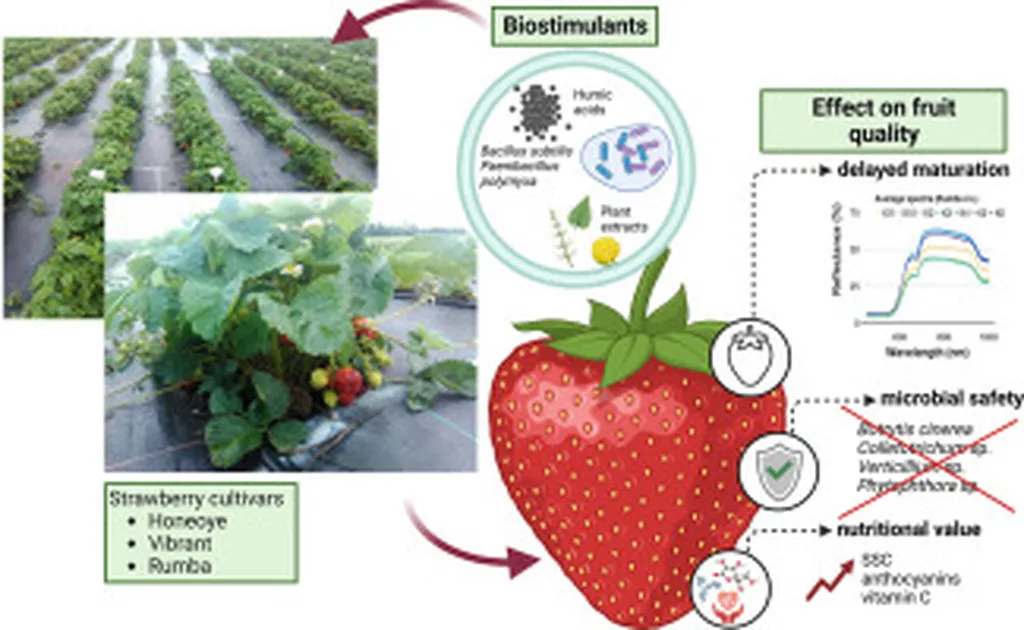In the heart of Essex, a groundbreaking study is reshaping the future of strawberry cultivation, offering a glimmer of hope for growers grappling with water scarcity and nutrient limitations. Ruvini Ranasingha, a researcher from the School of Agriculture, Animal and Environmental Sciences at Anglia Ruskin University Writtle, has been delving into the world of biostimulants, exploring their potential to enhance water and nutrient use efficiency in hydroponic strawberry production.
Strawberries, beloved for their flavor and nutritional benefits, are notoriously sensitive to abiotic stresses. With climate change tightening its grip, water shortages are becoming an increasingly common challenge for growers. Ranasingha’s study, published in the Journal of Sustainable Agriculture and Environment (or ‘Journal of Sustainable Farming and Environment’ in English), investigates the use of microbial biostimulants and protein hydrolysates to improve drought tolerance and irrigation efficiency in glasshouse strawberry cultivation.
The study, conducted in an unheated glasshouse from May to November 2024, involved two strawberry cultivars, ‘Loren’ and ‘Malwina’. Plants were grown in commercial compost media under two irrigation regimes (100% and 50%) and treated with biostimulants (Vitalnova TriBoost and Hicure). The results were promising, with biostimulant treatments significantly improving various growth and physiological traits, especially under deficit irrigation.
“Biostimulants can support improved irrigation efficiency and drought resilience in soilless strawberry production,” Ranasingha explained. In the ‘Malwina’ cultivar, TriBoost significantly enhanced leaf count, shoot fresh weight, shoot water content, and stomatal conductance. Hicure, on the other hand, improved stomatal conductance in both cultivars, suggesting improved physiological responses to reduced irrigation.
The study also found that biostimulants can enhance fruit weight, with TriBoost and Hicure significantly improving fruit weight by 35.7% and 37.0% respectively in ‘Malwina’ under 50% irrigation. However, the yield increases were observed in only one cultivar, highlighting the importance of tailored biostimulant use.
This research could have significant implications for the commercial strawberry industry, particularly in regions prone to water scarcity. By improving irrigation efficiency and drought resilience, biostimulants could help growers maintain yields and quality, even in challenging conditions. Moreover, the findings could pave the way for further research into biostimulants and their potential applications in other crops and cultivation systems.
As Ranasingha noted, “These cultivar-specific responses highlight the importance of tailored biostimulant use and provide valuable insights for growers.” With climate change continuing to pose challenges for agriculture, the need for innovative, sustainable solutions has never been greater. This study offers a promising step forward, demonstrating the potential of biostimulants to enhance crop resilience and support sustainable agriculture.
In the face of an uncertain climate future, Ranasingha’s research offers a beacon of hope, illuminating a path towards more resilient, sustainable strawberry cultivation. As the world grapples with the challenges of climate change, such innovations will be crucial in ensuring food security and supporting the livelihoods of growers worldwide.

